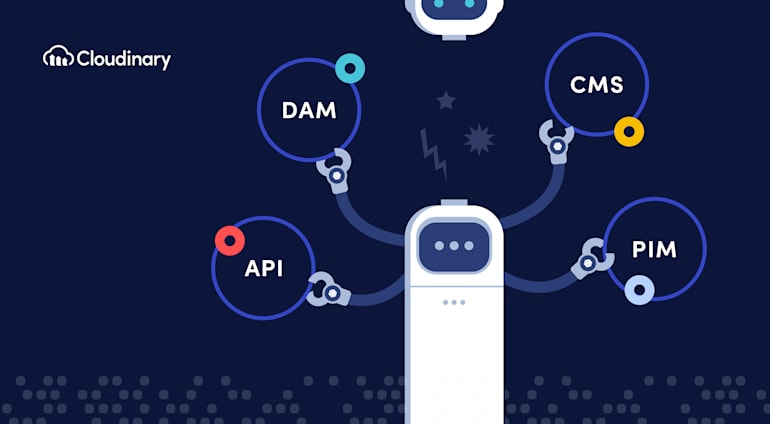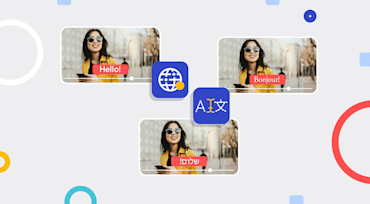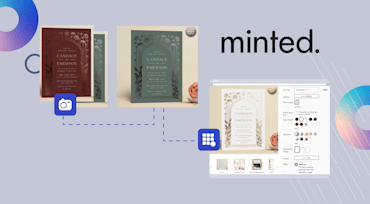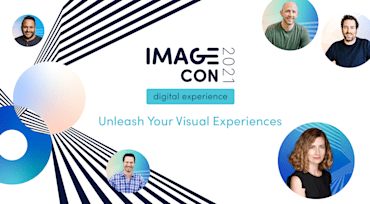You’ve likely heard of the increasingly popular catchphrase headless architecture in technical or marketing discussions vis-a-vis building a martech stack for headless e-commerce. You might also understand the headless concept of open APIs and their benefits. However, as impressed as you might be by the architecture’s advantages, you hesitate to look into the related applications for adoption because they require more expertise to manage than the standard ones in an all-in-one e-commerce platform.
Nonetheless, even if your company has not defined a strategy for a headless architecture—and regardless of whether you plan to use it or not—it pays to familiarize yourself with this highly valuable but somewhat complex approach.
What Does a Headless Architecture Do?
A headless architecture decouples front-end and back-end services so that companies can integrate independent vendor solutions and applications into a single, customized, and easy-to-manage platform. Accordingly, headless applications are a major technological innovation that takes the SaaS revolution to the next level by affording you access to all the best-in-class SaaS capabilities with no need for internal management of siloed applications built on different protocols.
Furthermore, the headless architecture offers open APIs with which you can deploy best-of-breed applications to any business platform. Besides streamlined operations, you also gain unrivaled flexibility in incorporating capabilities that standard platforms don’t offer.
What Problems Do Headless Applications Address?
With SaaS applications, businesses—from mom-and-pop shops to mega enterprises—can operate more efficiently and effectively. In fact, those applications have leveled the playing field of innovation and enabled deployment and continued access to cutting-edge capabilities.
Traditionally, SaaS applications are deployed in either of these two ways, both of which have significant downsides:
- Best-of-breed applications: Despite their innovative features for business functions, independent best-of-breed applications tend to render operations more complex and create silos. Fixing the related issues is a time sink for developers.
- All-in-one platforms: This is a unified and streamlined approach through which applications seamlessly integrate with one another. Though efficient, however, it lacks advanced components.
Those problems are absent in headless applications.
How Do You Build a Headless Website?
Consider a business that looks to deliver an exceptional customer experience on its website by seamlessly integrating all its applications and leveraging best-of-breed capabilities.
A CMS Alone Cannot Handle the Demands of Modern Websites
In a traditional SaaS environment, most businesses rely on a content management system (CMS) to run their websites. In recent years, with images and videos proving to be invaluable in inspiring consumer action, the demand for visual assets is skyrocketing, and managing rich media has become a daunting challenge.
Make no mistake, the process of organizing, sourcing, optimizing, and delivering visual assets in the perfect format in real time for all customer contexts is highly complex and cannot be efficiently done manually. The basic CMS features for managing visual media are not purpose-built for that undertaking and hence not up to the task. As a solution, companies that aim at delivering a media-rich experience have turned to a digital asset management (DAM) platform.
Unfortunately, a best-of-breed CMS and a best-of-breed DAM cannot work together to fully accomplish these important tasks:
- Match the media assets in the DAM storage with that in the CMS.
- Personalize content by pulling user profiles with a marketing-automation tool.
- Offer SKU-specific guidance for the merchandise in a product gallery by incorporating metadata from a Product Information Management (PIM) system.
A consistent structure in which to successfully perform the above is paramount.
Headless DAM Improves Efficiency and Lends Control
Most organizations, big and small, rely on multiple CMSs, with each of the major content categories—blogs, customer support, email campaigns, SEM—residing on a different CMS. Even though you can consolidate all that content within a headless CMS, teams tend to resist migration to a new system or prefer a CMS of their own.
Managing media through a CMS is a laborious, error-prone undertaking, however—a result of the proverbial left hand not knowing what the right hand is doing. Two typical problems:
Multiple versions and silos, leading to confusion and frustration on the part of content creators, who must guess which image or video on which page is the most up-to-date one.
Inconsistent messaging, such as that caused by outdated logos and the like.
As a sound solution, a headless DAM platform can connect to each CMS, replace the internal media library, and, most significantly, act as a central hub for team access and collaboration. Of quintessential importance is the headless DAM's integrability. So, be sure to pick one that offers plugins and open APIs that enable reliable and simple integration with your CMSs.
Thanks to its focus on image- and video-related capabilities, a headless DAM platform packs a big punch of value. Powered by tightly tuned AI algorithms, such a platform can source the right assets and data from other platforms, such as PIM, optimize those assets based on the unique context of the user, and deliver them in real time. Because a headless DAM has its own content delivery network (CDN), you have optimum flexibility in constructing and modifying asset components. None of that is possible in traditional systems.
As a prerequisite, your CMS must connect to the headless DAM so that your content creators know what content to show and where. A headless DAM fulfils that crucial requirement without a hitch, as described in the next section.
The Headless DAM’s API-Oriented Approach Delivers
Headless DAM platforms use a cloud-based, API-first approach to decouple the front end and the back end of content management. Ultimately, that approach enables businesses to seamlessly integrate their other platforms and best-of-breed applications to organize, search, and manage through an embedded or customized UI, or with API calls.
Specifically, headless DAMs offer these major benefits:
- Simple and complete search, version management, and access control with no need for additional development or integration.
- A single consistent interface for the entire organization.
- A streamlined workflow for marketers to easily search for and retrieve the most ideal assets for initiatives regardless of the size of the asset library.
- The option to seamlessly add other headless DAMs to take advantage of more features.
- The flexibility to keep storing media in a best-of-suite system and mirror that system's folder structure in the headless DAM with APIs for delivery.
- The ability to process all media types at scale, including images, videos, 3D objects, and even AR and VR.
What Does a Combination of Headless DAM and Headless CMS Offer?
By adopting the headless architecture, you can enjoy best-of-breed capabilities that are not available in your existing platform without disrupting any of your operations. For all that it requires more hands-on management than an all-in-one SaaS platform, this approach is well worth considering given its significant benefits of flexibility, efficiency, and, above all, the delivery of a robust and engaging experience for your audience.
Want to Learn More About Headless?
- For an in-depth description of how the headless approach fits into a broad e-commerce strategy, read our Guide to Building the Ultimate E-commerce Website.
- For details on how to streamline content delivery with the headless architecture, see our whitepaper Simplifying the Headless Architectural Paradigm.
- For more nuances on the benefits of the headless architecture and pointers on resolving the related caveats, as well as an enlightening recount of media experts’ real-world experience with headless, watch our webinar The Road to Headless.
- To learn the pros and cons of best-of-breed and best-of-suite models for e-commerce experiences and the advantages of adopting a headless architecture instead, read our blog Evaluating the Feasibility of Adopting the Headless Architecture for Your E-Business.





